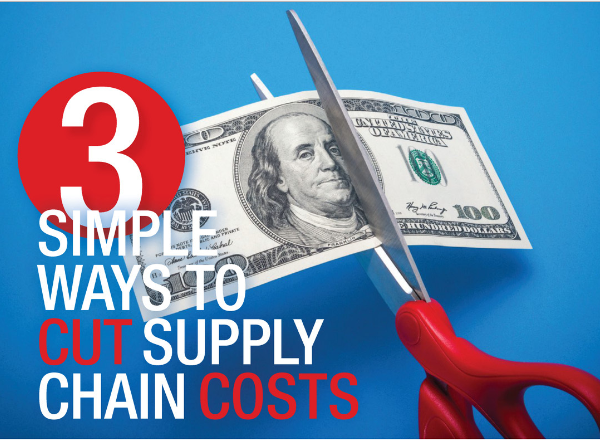Three simple ways to cut supply chain costs

by Michael Galle
For distributors eager to provide as many products to their customers as possible, understanding the supply chain is critical. But because the task of optimizing the supply chain can be daunting, many well-managed distributors simply avoid it.
Every company is different, with each possessing unique characteristics and skills, and so it is likely that your company is managing the supply chain well in some areas, but not so much in others. To effectively evaluate your supply chain without becoming overwhelmed, break the process into three parts, tackling each of them one at a time:
Inbound/procurement
Whether you’re receiving raw materials or finished goods, procurement of product is a common place for supply-chain costs to get lost. Allowing the lure of achieving free freight to impact the decision on how much product you should purchase can be costly, both from an inventory carrying cost and an inventory-control perspective. The purchasing team must examine the full cost of procurement, understanding that suppliers will be factoring freight into product pricing. To help control costs, keep in mind that meeting free-freight minimums may not be the most cost-effective approach. As you search for the cheapest sourcing arrangement, you must work to unbundle product costs from the inbound freight costs for the clearest picture possible.
Undoubtedly there are certain suppliers from which it makes sense to purchase direct, where volume, costs and relationships dictate. But there are other suppliers in your portfolio where cost controls should be enacted and partnerships developed with master wholesalers like AgoNow, which can manage unique supplier relationships directly and unload the burdens of high minimums and excess inventory carrying costs.
Facility storage and productivity
Supply chain-related costs are incurred any time product is stored and movement occurs within the four walls of your business. The cost for moving each product will vary depending on several factors, including its size, which impacts storage-space needs, and how difficult it is to access. To reduce supply-chain costs inside your own four walls, ensure that high-turn items are within easy reach and consider reducing your stock levels of large, difficult-to-store/handle items where sales velocity is slow, but effort to store and handle is high. Partner with master wholesalers to manage these items.
Movement to the customer
Outbound freight costs are a necessary part of doing business for most. The ability to quickly deliver product to customers is key to their level of satisfaction and loyalty. Controlling these costs is another factor in better supply-chain management. Not all outbound freight options are equal, and certainly the variety of sources can be daunting. First, while continuing to meet your customer’s needs, consider a carrier that best fits the geographical area of service.
While many less than full truckload (LTL) carriers show broad coverages, they frequently use interline partners for final-mile delivery. They typically do not share this fact, and therefore, many times a different carrier delivers product to your customer than the one that picked up the product from your dock. This can be frustrating if/when issues arise and will ultimately add costs.
Make sure that when shipping products to your customer, you are using a carrier that will make the final-mile delivery and that has a good reputation within those served areas. Secondly, don’t be fooled by high-discount levels offered by certain carriers looking to earn your business. Discounts offered are based on a carrier’s base rates, and each carrier sets their own based on volume, demand and costs for these lanes. Working to fully understand the base rate from which these discounts are provided is extremely important. A 75 percent discount off of a higher-base rate structure may not be cheaper than a 60 percent discount offered by a carrier with lower base rates.
If your business routinely ships via the LTL market, consider your relationships with those carriers. If you are unsure of how to best manage those, there are many great third-party logistics (3PL) servicer providers that can assist. These 3PL service providers have the right relationships and industry knowledge, giving you the best opportunity to leverage your shipment and creating better cost controls of your outbound freight.
Consider drop-shipping options from suppliers and master wholesalers to give you more flexibility in meeting customers’ delivery expectations.
 Michael Galle is director of operations for AgoNow, a Tulsa, Oklahoma-based pure industrial master wholesaler and channel solutions provider. Learn more about AgoNow at agonow.com.
Michael Galle is director of operations for AgoNow, a Tulsa, Oklahoma-based pure industrial master wholesaler and channel solutions provider. Learn more about AgoNow at agonow.com.
This article originally appeared in the Jan./Feb. 2018 issue of Industrial Supply magazine. Copyright 2018, Direct Business Media.











